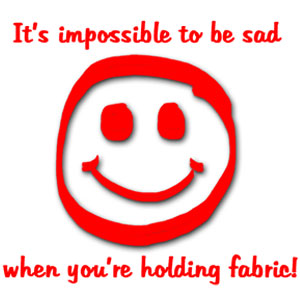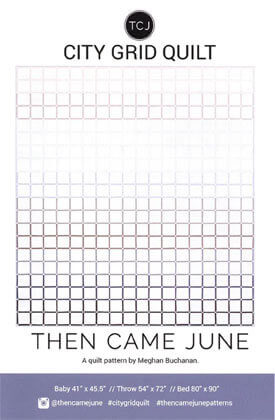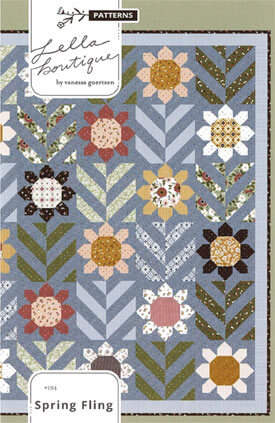- Home
- Free Motion Quilting 101
- Machine Quilting Techniques
Machine Quilting Techniques
for Free Motion Quilting
This post contains affiliate links, for which I receive compensation.
There are several simple machine quilting techniques to master
before you begin free motion machine quilting in earnest.
If you just need a review, please use the list below to move to the topic of interest.
Proficient in the machine quilting techniques listed above?
Then skip to the Free Motion Quilting 101 Table of Contents.
Get the quilt sandwich ready for quilting
Before you begin practicing these machine quilting techniques, inspect your quilt sandwich.
It should be nice and neat. No threads hanging, no shadowing, clean, and pin basted. Make it a habit for when you get to your real quilt top.
Baste with safety pins inserted no more than three to four inches apart.
To check, put your palm down flat on the quilt top. You should feel at least one safety pin if not more.
Need more?
Then use them.
Just remember to remove them as you go. Do not sew over them.
I do not hand baste (with needle and thread) quilts that will be machine quilted. It's just too easy to sew over the basting threads. It's then a job to go and pick the thread out from your stitches.
Complete the ditch quilting and stabilizing quilting first. That way many of the safety pins can be removed before the free motion quilting begins.
Return to Machine Quilting Techniques List
How to hold and move the quilt sandwich
There are several ways to hold the quilt while you're quilting.
None is better than another except for the one that works best for you.
Play with each technique when you practice to develop your skills.
With each of these methods, it is critical for you to remember that it is only the area of the quilt between your hands that should move. The rest of the quilt should be completely supported and still during quilting.
Method 1 - Using your fingertips
With your fingertips (or up to half of the first joint on your finger) touching the quilt, move it around under the needle.
- Your hands should be relaxed and wrists up slightly.
- The open space between your hands is about 6 inches.
- Your hands are always within a couple of inches in front of or to the back of the needle. If they are much further than that, you begin to loose control. Stop with needle down. Adjust your hands. Begin stitching again.
- Your arms are resting on the table and not held out to the side like a chicken. You will be more relaxed in this position.
Why fingertips?
Try moving the practice sandwich under the needle with your palms flat. (I'll wait.)
The larger hand surface pressing down on the quilt creates more friction, making it hard to move the quilt sandwich.
Remember, at this point we are using a small practice sandwich. Imagine what'd it be like with a larger quilt. Though you are, again, only moving the quilt area that is between your hands, you would still have to get your hands flat in that small space.
If you need more ‘stick’ to your fingertips, use either the Machingers or Neutrogena hand lotion described in Machine Quilting Supplies.
Method 2 – Grasp the quilt in your hands
Again, there is approximately 6 inches of open space between your hands. To maintain control, your hands should never be more than a couple of inches in front of or behind the sewing machine. Take hold of the quilt much like you would a steering wheel.
At first this method feels like you are manhandling the quilt. Awkward feeling. You can't imagine this would ever work, right?
Practice so that you get used to it.
There are times when this will be the BEST way to move the quilt.
Method 3 – Use a tool like the Quilt Halo
As of this writing, I have not personally tested the Halo and cannot recommend its strengths or weaknesses.
I have used machine quilting hoops in the past and have not liked them because I'd run into them with my stitching. Quilting with too much ‘gusto’ perhaps?
But that doesn't mean it's not a good solution for YOU. If the first two methods aren't to your liking, the Halo is worth a try.
Return to Machine Quilting Techniques List
Starting and stopping a line of quilting
Use this machine quilting technique religiously to keep your quilt neat.
First, bring the bobbin thread to the top of your quilt sandwich so the bobbin thread doesn't get stitched into a line of quilting.
Lower your presser foot. Lowering the presser foot engages the tension discs on your sewing machine so you can make a stitch.
While holding your needle thread, take one complete stitch ending with your thread take up lever in the highest position. (I manually turn the hand wheel through a complete stitch.) Still holding the needle thread, raise your presser foot. A small loop of bobbin thread is now looped around your needle thread.
Tug on the needle thread to bring the bobbin thread to the top. Sometimes it is necessary to use the blades of your scissor or a seam ripper or something long and thin to bring all the bobbin thread to the top of your quilt. Reinsert the needle into this hole and begin stitching.
If you are beginning a line of quilting somewhere within the quilt then your first stitches will be micro stitches. The length of these stitches is micro—approximately 25 to 30 per inch—roughly 6-8 stitches in the first 1/4" of quilting.
Hold both thread tails taut in your left hand so they don't get pulled back into the quilt and make a thread nest on the back.
Stitch for about a quarter of an inch using micro stitches. Stop.
Trim the thread tails even with the quilt top, taking care not to cut the quilt top.
If you are beginning a line of quilting off the edge of the quilt top, somewhere in the batting, these micro stitches aren't necessary, but won't hurt either. The binding is stitched over these quilting lines and secures them before the quilt is finished. But do start a good inch from the quilt top so that the quilting lines don't pull out while quilting.
Begin quilting, creating stitches the length that you want based on the type of thread you have chosen.
To end a line of quilting create micro stitches beginning a quarter inch away from where the quilting line will end.
Trim the needle thread tail close to the top of your quilt, again take care not to cut the quilt top. You do not need to pull your bobbin thread to the top after ending the micro stitches. Just trim your bobbin thread tail close to the quilt back. Do develop the habit of trimming away the thread tails as you go.
If the line of quilting ends at the edge of the quilt top, continue the quilting stitches onto the excess batting for a good inch so that your stitches don't pullout as you're quilting the rest of the quilt.
Return to Machine Quilting Techniques List
Hand knotting thread tails
Sometimes, you'll have no other option but to hand tie and bury all your thread tails.
Reasons to hand knot
Luscious rayon threads and glitzy metallic threads call for a different method to begin and end the quilting.
Shiny, sparkly, lustrous threads are mouth watering on the cone or spool. When reduced down to a line of stitching on a quilt, a lot of that shine and sparkle disappears. This is because there is less of the thread for light to reflect off.
Simply put, to get the sparkle and shine for these threads, use a longer stitch length. Try it for yourself on a small test sandwich.
See the difference that a longer stitch length makes?
Now create a line of stitching with one of these threads using a micro stitch length of 25 to 30 stitches per inch.
Notice how the sparkle and shine disappears?
So if you begin a line of quilting with micro stitches using a shiny, sparkly thread, and then go to the regular stitch length, there can be a noticeable change in the glitz factor. You'll have to decide if it matters to you.
If it does, you'll have to get out the needle and hand tie and bury those knots.
How to tie a hand knot
There are many ways to hand tie a knot. This is how I do it.
Start a line of quilting by pulling the bobbin thread to the top of the quilt.
Do not use micro stitches.
Do leave a long enough tail to tie a knot with.
Quilt the line. At the end, leave enough thread tail to tie a knot by hand. Six inches is usually enough. At the ending stitch, tug on the needle thread to work the bobbin thread to the top.
Knot the starting thread tails together by tying a square knot. This knot should be about a quarter of an inch away from the quilt top. Thread a hand sewing needle with these knotted thread tails. Insert the needle into the hole of the first stitch and push it into and through the center of the batting for about a half inch. Pull the threaded needle through and out of the top. Trim your thread tails close to the top of the quilt. Repeat as needed.
By burying the thread tails in the batting there is little chance of them shadowing or showing through the top of the quilt. If possible, run the needle along an existing line of quilting to further camouflage the thread tail if the top fabric is light and your thread is dark.
Return to Machine Quilting Techniques List
Where to watch where you are going
Of all the machine quilting techniques we've discussed, this one is specific to free motion quilting.
Keep your eyes focused on where you will be quilting next. Do not watch where the needle enters the fabric. You look ahead to make sure you don't run into a previous line of quilting.
Driving a car is a good analogy. You don't look where the wheels hit the pavement. You focus on the signs showing where to go next.
This skill takes time to learn. So practice. The confident skill you gain is worth the time.
Return to Machine Quilting Techniques List
How to determine your stitch length
Out of all the machine quilting techniques, this one takes the most practice to learn, but it is definitely ‘learn-able’.
Stitch length is created by the combination of how fast you move the quilt sandwich under the needle and machine speed.
Remember, your feed dogs are down and cannot help move the quilt through the sewing machine.
Strive to keep your stitches even. Learning this skill takes practice…there is no other easy, magical way. It is all practice.
I do not recommend varying the machine speed as you stitch.
Some quilters do.
For instance, they'll say to speed up as you go around curves. I find that keeping a constant speed and hand motion gives me the most reliably even stitches. I'm able to both hear and feel when I am in the ‘zone’.
Do experiment with both techniques. The ultimate goal is for YOU to feel both comfortable AND in control as you quilt.
Sometimes the stitch length needs to be very short
It depends on the size of the design and the thread being used.
For instance, the curvy pattern of micro stippling is teeny weeny. A stitch length of 12 spi is much too long to complete the curve gracefully. Play with your machine speed and how fast you move the quilt to adjust your stitch length when you warm up.
The stitch length should be just long or short enough to produce smooth curves.
Very fine thread—say a YLI 100Wt Silk thread—requires a shorter stitch length. Due to it's fine-ness, what would usually be normal sized stitches end up looking rather like basting. Not a look we, Quilters, are after.
Return to Machine Quilting Techniques List
Don't Turn the Quilt Under the Needle
This is perhaps the hardest of the machine quilting techniques to learn but so necessary when working on larger quilts.
Your quilt is not a steering wheel.
Practice machine quilting without turning the quilt under the needle. When the quilt is small, like your practice quilt sandwich, it's tempting to turn the quilt all which ways under the needle. The quilting seems so much easier.
And you'd be right, but...
Resist the temptation!
...when the quilt is large, it's not so easy to turn. Sometimes darn near impossible without bending or breaking a needle.
If you never practice not turning the quilt on the smaller stuff, it's much harder to do in the future on a larger quilting project.
Practicing good quilting habits is your friend.
Return to Machine Quilting Techniques List
It's worth the practice
Practice these machine quilting techniques until they are second nature. You will have fewer problems with and interruptions to your quilting sessions.
You'll be glad you had the dedication every single time you sit down to quilt.










